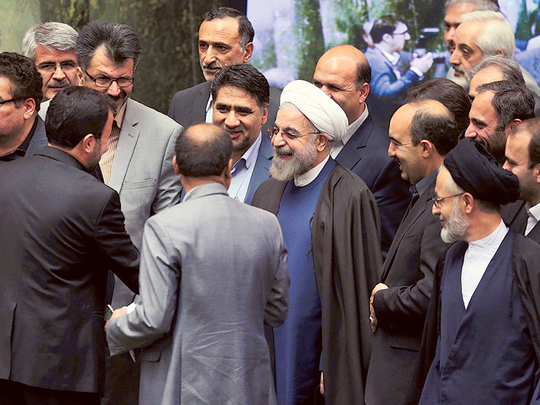
Tehran: The Iranian parliament overwhelmingly rejected President Hassan Rouhani’s pick for science minister on Tuesday - the third time they have done so in little more than a year.
The rebuff underscores the pressure that Rouhani, a moderate elected in June 2013, faces from a parliament dominated by conservatives at odds with his desire to open up the country to the West.
The post of Minister of Science, Research and Technology is sensitive because it involves oversight of Iran’s universities and students, whose political activities are heavily monitored by the regime.
Fakhr Al Din Ahmadi Danesh-Ashtiani, whose candidacy Rouhani spoke up for in the chamber, received only 70 votes from the 257 lawmakers present - 171 voted against him and 16 abstained.
Danesh-Ashtiani, a civil engineer by training, was a vice minister for education under Iran’s last reformist president, Mohammad Khatami, who was in power between 1997 and 2005.
On Tuesday, lawmakers aired a video of Danesh-Ashtiani in 2009, in which he was shown to call for the closure of universities in protest at the controversial re-election of president Mahmoud Ahmadinejad.
A previous science minister candidate of Rouhani’s was rejected in October by parliament, which two months earlier had sacked the last minister, Reza Faraji Dana, who was deemed too close to reformists.
Lawmakers criticised Faraji Dana - who was Rouhani’s second choice - for appointing too many officials with links to the so-called “seditionist” movement that took to the streets in protest after Ahmadinejad’s re-election.
The challenge was crushed by the regime but dozens of people died and thousands, many of them students, were arrested.












